2009 Snowmobile Preview Part I
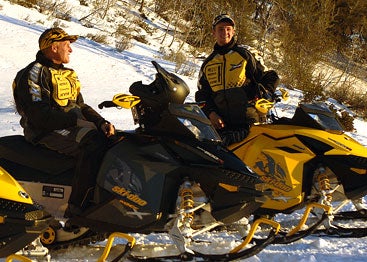
What’s likely to be new in the next year, now that the 2008 machines are hitting the trails?
Now that we’ve turned the page to the 2008 calendar year, it’s a naturally appropriate time for some of us to try to anticipate what we may see from the snowmobile manufacturers for 2009. One thing for certain: snowmobile sales will be up from last year and, while not back to levels seen a decade ago, the total result will be healthy for snowmobile makers, their dealers and any other businesses reliant on snow and snowmobile sales successes.
As we entered the 2007-08 snowmobiling season, sled manufacturers exercised caution in their production. Polaris proudly claimed it was the leader in holding back on manufacturing sleds for the upcoming season. Arctic Cat’s president Chris Twomey told stockholders that the company would reduce inventory to its snowmobile dealers by 30 per cent. We expect the other OEMs, Ski-Doo and Yamaha, exercised some restraint as well. All sled makers needed to curtail inventory as their dealers were overburdened with non-current models on which they had to pay varying degrees of interest for the simple pleasure of carrying on their showroom floors. With the advent of early and often snowfalls, snowmobile dealers could see both new and non-current inventory heading out of their dealerships. With snowfall and consumer demand, dealers could offer good deals, but could also hold on to better profits than they would have seen the year before. At that time, dealers simply wanted the sleds out of their shops so they didn’t have to pay interest on them over the summer! Now with new inventory held back, dealers should be able to get a realistic profit from their sales.
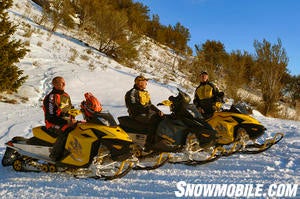 The MXZ was the harbinger of the lightweight REV-XP platform. We expect to see it expanded across the line in 2009.
The MXZ was the harbinger of the lightweight REV-XP platform. We expect to see it expanded across the line in 2009.
With non-currents moving and somewhat limited supply of 2008 models, this strong snow season should set a tone for happier times for all snowmobilers—sort of. With the best value sleds leaving the showrooms, snowmobile consumers are about to see ‘real’ pricing on the new models. Will this result in sticker shock? Will snowmobile manufacturers offer special ‘lead-in’ sleds such as the Polaris Shift, which is beginning to look like a better and better concept every day?
And, what about the fact that future sleds need to be cleaner and more fuel-efficient? This costs money and is certain that consumers will get to pay for the new technology. In the United States marketplace, what happens when a new administration comes in and looks at energy solutions and global warming? Let’s face it; the Bill Clinton administration was downright hostile to snowmobiles and powersports in general. Anyone remember West Yellowstone and snowmobile limits? What about national parks and forests? Depending on the ‘who’ is elected, we may look upon that Bill Clinton era as good times!
Nonetheless, it’s a new year and we should be happy about the great snow dump of 2007! Sled dealers are pleased. That means sled makers can come to market with models they have been holding back.
Last season, Yamaha introduced a totally revamped Vector, but was hesitant to showcase it too early, for fear of hurting dealer sales of the current version. Ski-Doo, on the other hand, had a brand new REV that generated a great deal of talk, much of it created by Ski-Doo itself and the clever use of the Internet. The company learned from Toyota’s Scion marketers about the value of the web. What comes this season?
Based on many years of being as right as we’ve been wrong (but usually close), we’re taking our annual leap of speculation for what will be new with the 2009 snowmobiles. Remember, this is not based on any professional surveys but simply on our own whimsy and sense of outrageous prognostication. Here we look at Ski-Doo. In Part II we’ll look at Arctic Cat, Polaris and Yamaha.
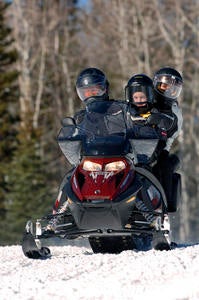 Look for the 2009 GTX to replace the REV platform with the newer REV-XP chassis.
Look for the 2009 GTX to replace the REV platform with the newer REV-XP chassis.
Since the 2009 model year marks the 50th anniversary of the original Ski-Doo, we start with the leader. Amazingly, even after 50 years, Ski-Doo manages to lead with innovative and exciting product. Under the leadership of Laurent Beaudoin, son-in-law of Ski-Doo inventor and heritage founder J-Armand Bombardier, Ski-Doo leads the snowmobile industry in many ways—innovation with the concept of a sports snowmobile; creativity with instituting a plan to create networked trail systems (SnoPlan); manufacturing prowess by owning its power source (Rotax); and creative management to use snowmobiling profitability and success to leverage the fledgling snowmobile manufacturer into one of the world’s leading transportation conglomerates (Bombardier Inc.). While BRP Ski-Doo is no longer a direct piece of Bombardier Inc., this historic and proud snowmobile name has the heritage of the Bombardier family yet playing a role in its future.
So, there’s history and innovation? This is an industry and sport of ‘What have you done for me next year?’ Let’s expect that the REV XP platform was the beginning of the conversion of virtually all Ski-Doo models that were on the original REV platform moving to the REV XP style.
Heritage sleds
We also expect that there may be a very limited build heritage Olympique model for 2009. We can surely expect special badged anniversary edition graphics packages and some special announcements and programs to let every snowmobiler in the snow universe know that this is Ski-Doo’s 50th anniversary. Rightly so, we might add. Ski-Doo has arguably done more for snowmobiling than any other brand. Ski-Doo snowmobiles went to the North Pole—and gained exposure for the sport. Ski-Doo helped lead the way for uniting user groups into state and provincial associations. Ski-Doo used first-rate public relations and advertising to make the word ‘ski-dooing’ a verb for snowmobiling.
For 2009, we expect to see a return to highest performance. The demise of the 1000cc Mach Z lake speedster should be short lived. We figure that the Freestyle model may be due for an overhaul. Let’s hope that it’s an exciting but lower priced entry platform for younger riders while still enough fun for older riders as well.
Can we expect a new touring model? We would expect the GTX models to all be on the REV XP chassis for 2009, just as the GSX was. When it comes to touring, Ski-Doo does it as well as anyone.
Engine-wise, we will be surprised (shocked, actually) if we don’t see at least one 2009 Ski-Doo equipped with the engine technology from BRP’s Evinrude outboard engines. Ski-Doo and its Rotax engine subsidiary make darn fine two-strokes, but they are of the older technology and pretty much like every other sled makers’ two-strokes. With the combined advantage of E-TEC and Rotax, Ski-Doo can respond to the clean environment issues of emissions and fuel usage with its own technology. And without the need of a four-stroke engine.
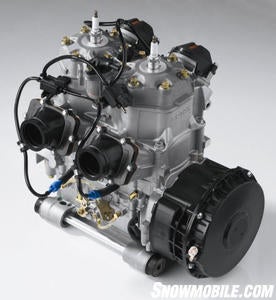 Ski-Doo’s 800cc twin may not be the largest engine in the 2009 line up. We also expect to see some E-TEC technology crossing over from BRP Evinrude to the Ski-Doo line as well.
Ski-Doo’s 800cc twin may not be the largest engine in the 2009 line up. We also expect to see some E-TEC technology crossing over from BRP Evinrude to the Ski-Doo line as well.
According to a 2003 article in Automotive Design & Production, George Broughton, director of engineering, boats and outboard engines division for Bombardier Recreational Products (Sturtevant, Wis.) and his team created engines that are not simply ‘clean’ but also virtually worry free.
Quoted in the article, Broughton said “The trick was to make an engine that would idle at 500 rpm and make 1 hp, and run 6,000 rpm and make 250 hp while meeting the emission standards.”
Converting an outboard for snowmobile usage is nothing new. In fact, it was Evinrude that came into our sport with its own line of snowmobiles powered by its own two-stroke motors.
Broughton states that an E-TEC engine will start within one revolution. That’s because the design features a sealed injection system, which keeps air from entering the fuel system itself. It’s said to keep the gas fresh. Within the first revolution, as the flywheel begins to turn, electrical current at the engine controller determines when to inject the fuel and fire the spark plug. Broughton claims that at the end of three year’s use, the only item that may need service is the spark plug.
According to E-TEC infomercials, the engine is designed to go three years without any dealer maintenance.
If emissions standards do get tighter, Broughton doesn’t see any big disadvantage for the E-TEC two-strokes.
In the article, Broughton is quoted as saying, “Oil isn’t a big player because the amount burned is about one per cent of the total intake charge, and it never mixes with the gasoline.”
Simply stated, the average user of a 50-hp E-TEC will go through two quarts of oil per year. An annual oil change on a four-stroke would be no less and would most likely require an oil filter change as well.
According to the E-TEC spokesman, hydrocarbons would be the predominant pollutant, a portion of which are scavenged and burned in the next combustion cycle. If and when emission standards tighten, Broughton feels that a simple “1970’s technology” reduction catalyst would be all that was needed. As of 2003, Broughton said the engine was clean enough to pass California’s 2008 standards.
So much for our expectations for Ski-Doo’s 50th anniversary model line for 2009.
Related Reading:
2008 Ski-Doo GSX Limited Touring
2008 Ski-Doo Freestyle Backcountry
2008 Ski-Doo REV-XP MXZ Adrenaline




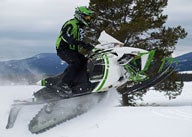
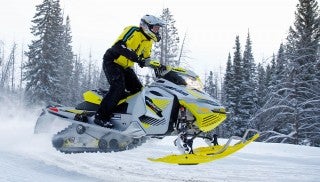


 Your Privacy Choices
Your Privacy Choices